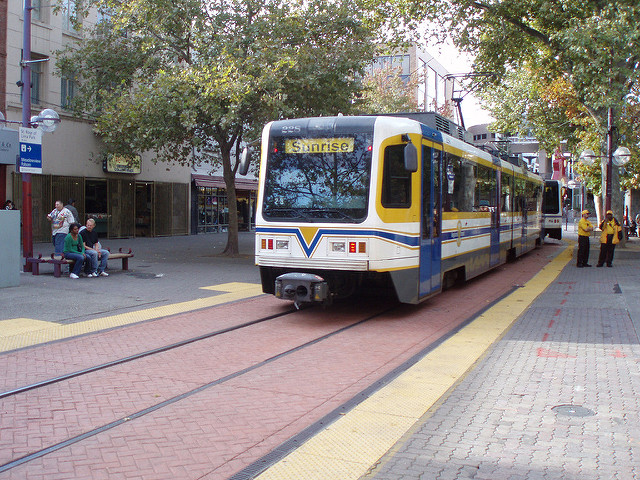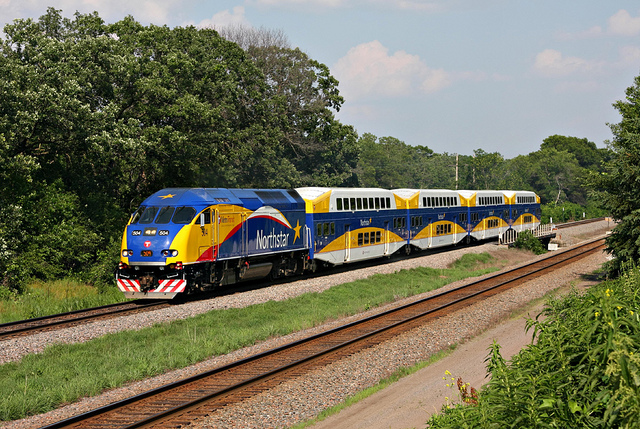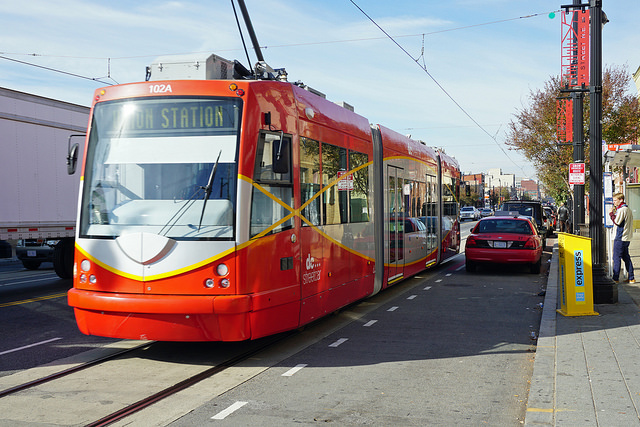Transit ridership in 2015 was 1.26 percent less than in 2014, with bus ridership falling by nearly 3 percent. But transit advocates wanted to lead with good news, so Progressive Railroading‘s coverage is headlined, “rail ridership increased as overall public transit use dipped 1.3 percent.”
Why did rail ridership increase? In the case of heavy rail (subways and elevateds), the answer is that New York is enjoying its “largest jobs boom ever,” so subway ridership there grew by 14 million annual rides. Heavy rail as a whole grew by only 9 million annual rides, so take away New York and nationwide subway/elevated ridership declined. Among the big losers in heavy rail were Baltimore (-11%), San Juan (-15%), Los Angeles (-5%), and Washington DC (-4%). Of course, rail supporters in most of those cities still want to build more train lines.
For light rail, the answer is that Minneapolis-St. Paul opened its new Green line. This boosted the region’s light-rail ridership by 7 million rides, without which nationwide light-rail ridership would have declined by 5 million annual trips. Among the biggest losers were Baltimore (-15%), Cleveland (-6z%), Los Angeles, and Sacramento (each -5%).










